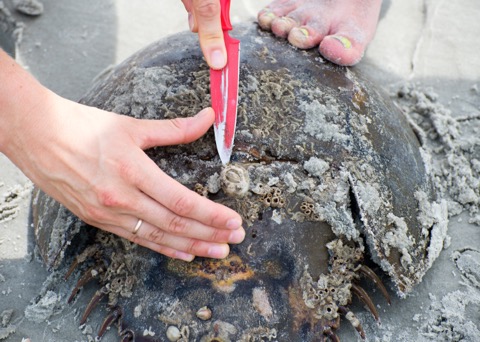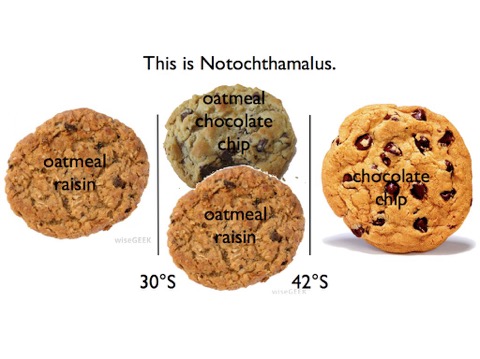barnacles
Chthamalids
07/08/15 12:01
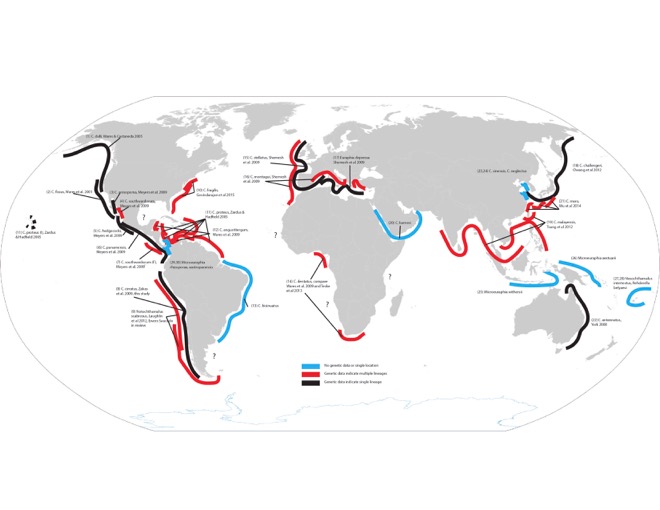
This tangled looking map is a laborious endpoint of me trying to put together what I know of diversity in the genus Chthamalus and close relatives (this includes some doubt about “close relatives” and whether Jehlius should really be Chthamalus as Darwin named it, whether the Euraphia and Microeuraphia are just clades within Chthamalus, and so on, and so it is still at best incomplete). I have a larger version of course if you want to see that. The black lines represent the studies where a nominal species has been evaluated with enough genetic data to confirm that it is, in fact, just one “thing”. The blue lines are taxa with insufficient information - maybe a single site, or none at all. And the red lines represent lineages within species that have been identified with genetic data, but have yet to be formally described as new species (and maybe that will never happen?). There are some interesting low-hanging fruit, depending on your access to certain parts of the world. For example, my work on C. dentatus that was published with Sabrina Pankey and Yair Achituv as co-authors contains very distinct diversity from the populations of C. dentatus in South Africa published by Teske et al. 2013. Benny Chan and colleagues have obviously identified a tremendous amount of diversity in southeastern Asia. Annette Govindarajan just found 3 cryptic lineages along the densely-studied east coast of North America! John Zardus showed us just how diverse “C. proteus” is in the Caribbean, and of course our work in the Chilean distribution of Notochthamalus is what had me thinking about this again.
I’d like to figure out how to make this build-able in R, so that as new data (and clades) are discovered the map can be auto-updated. For now that is slightly out of my reach in skill and time. But this is a single genus of barnacle that exhibits so much diversity genealogically, yet so little phenotypically. It is really just a phenomenon of calcareous beasts that distribute themselves everywhere, and diversify under mysterious processes. Diversity is a process, not a number. It is practically infinite in that regard (which makes it all the more stunning what a good job humanity is doing of messing up this process).
In the Field
27/05/15 10:15
The semester is over! Tralalalalalalaaaaaa!!
Hey, I love teaching. And there are parts of my job that I love. But most of those parts are concentrated in the few days a year when I’m working, but not in my building. Right now none of my projects are in active need of field sampling or monitoring or measuring anything, so I am living vicariously through my students. Christine led an expedition out to Sapelo last week, where the UGA Marine Institute put us up in a house on the marsh for 5 days of finding horseshoe crabs (for their Chelonibia epibionts - Christine’s dissertation beast), exploring the marsh, teaching my 8-year-old the taxonomy of fiddler crabs, a little beach time, and a lot of writing and excellent together time, all of it much needed.
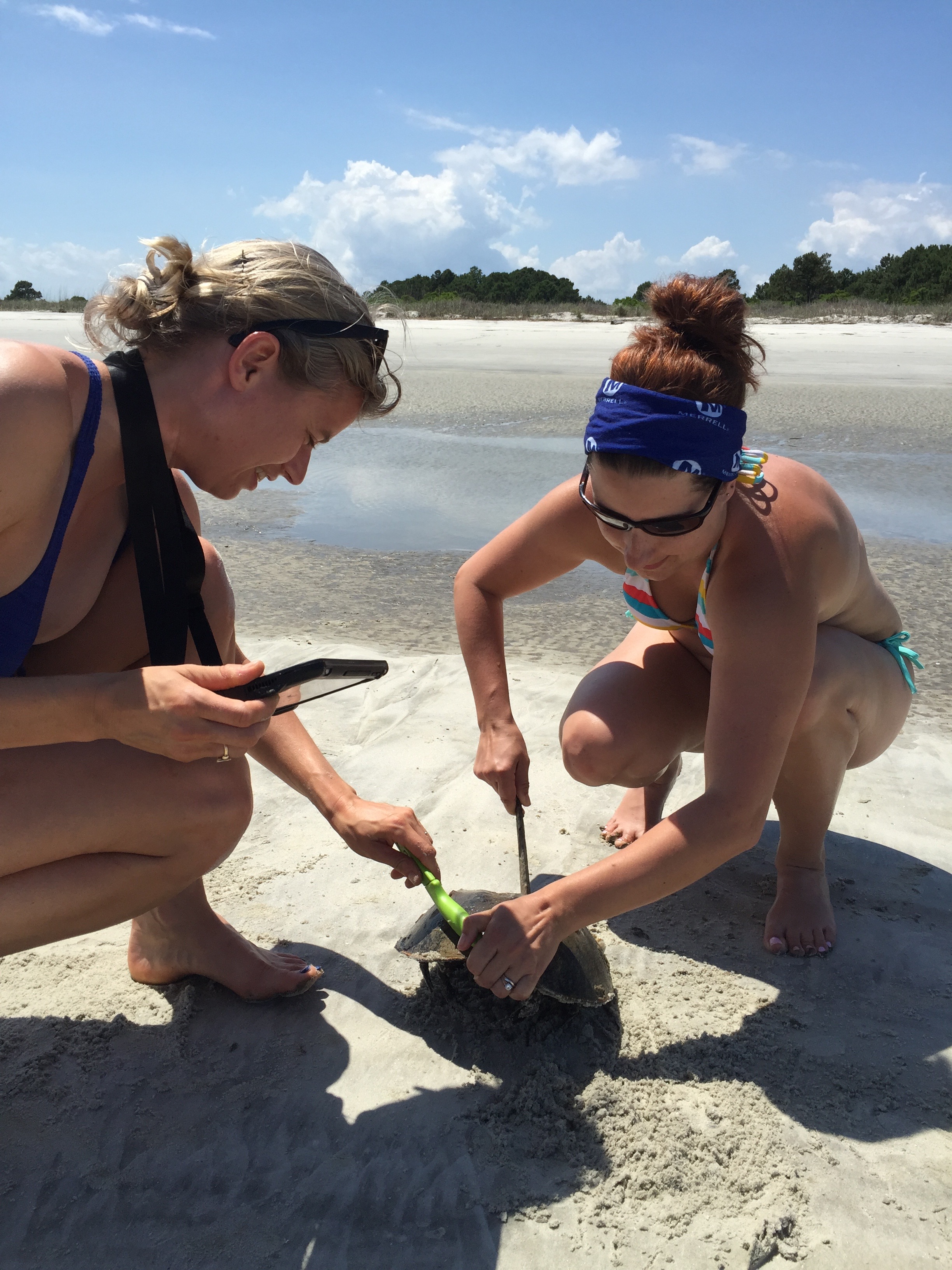
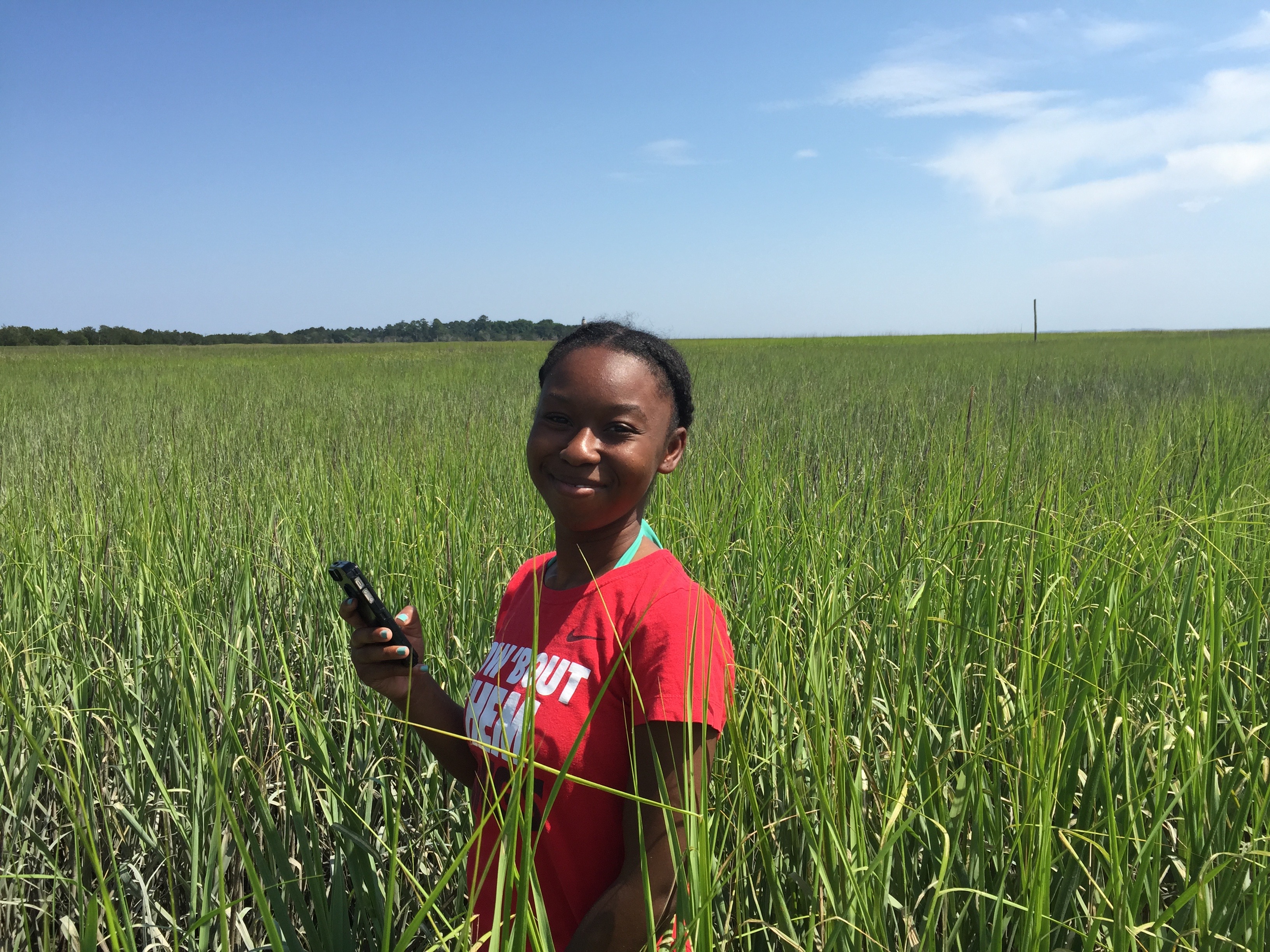
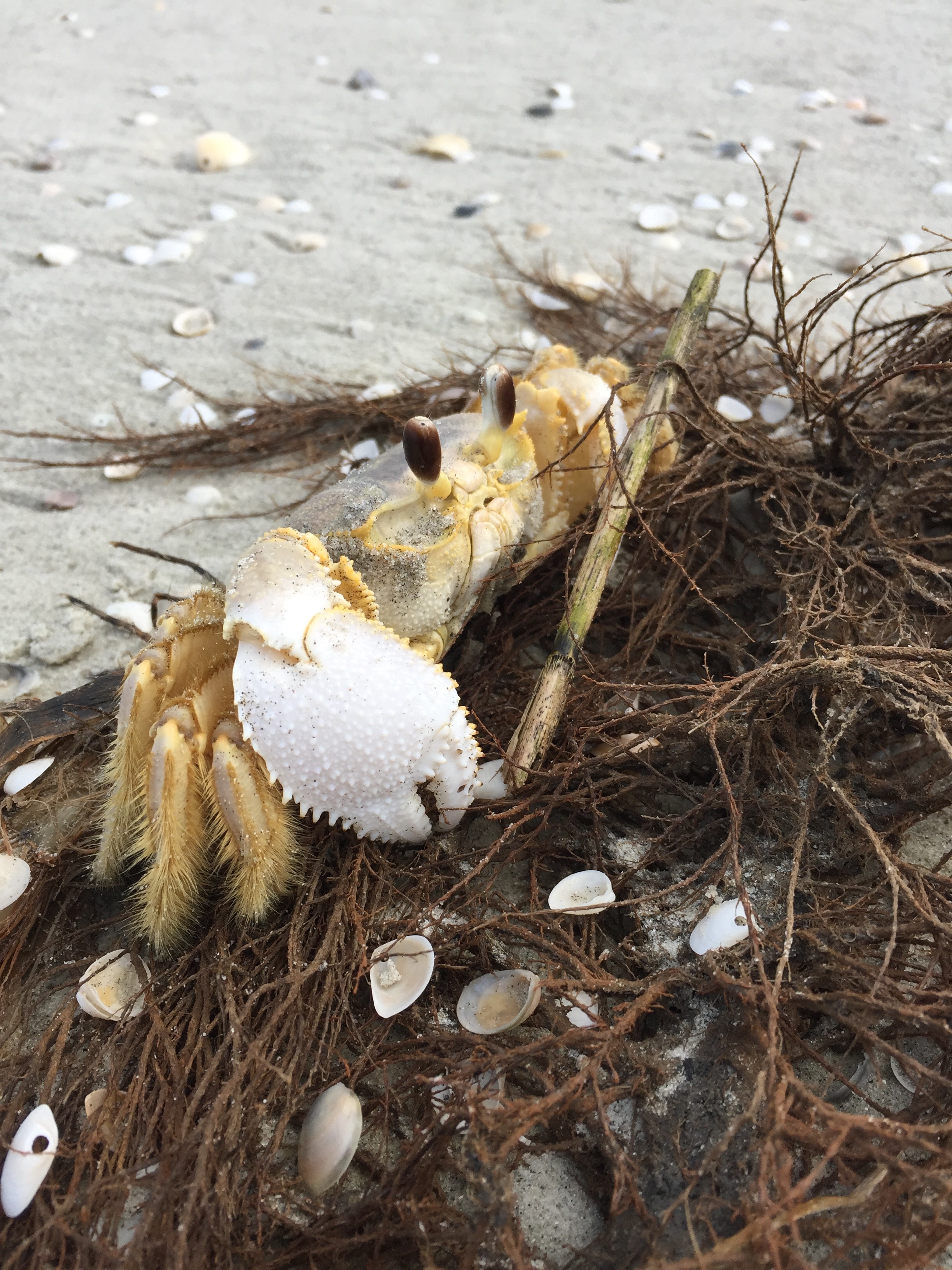
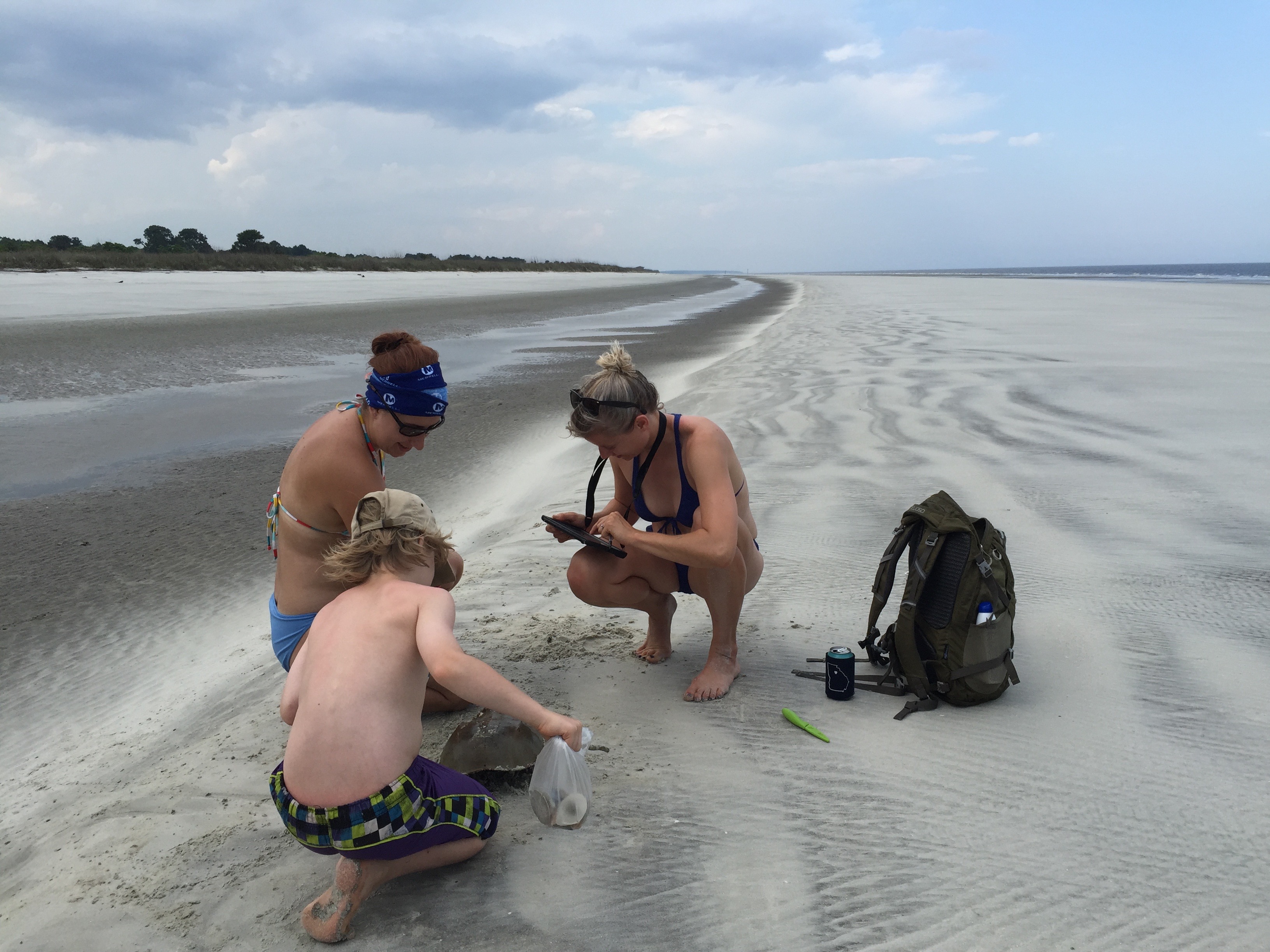
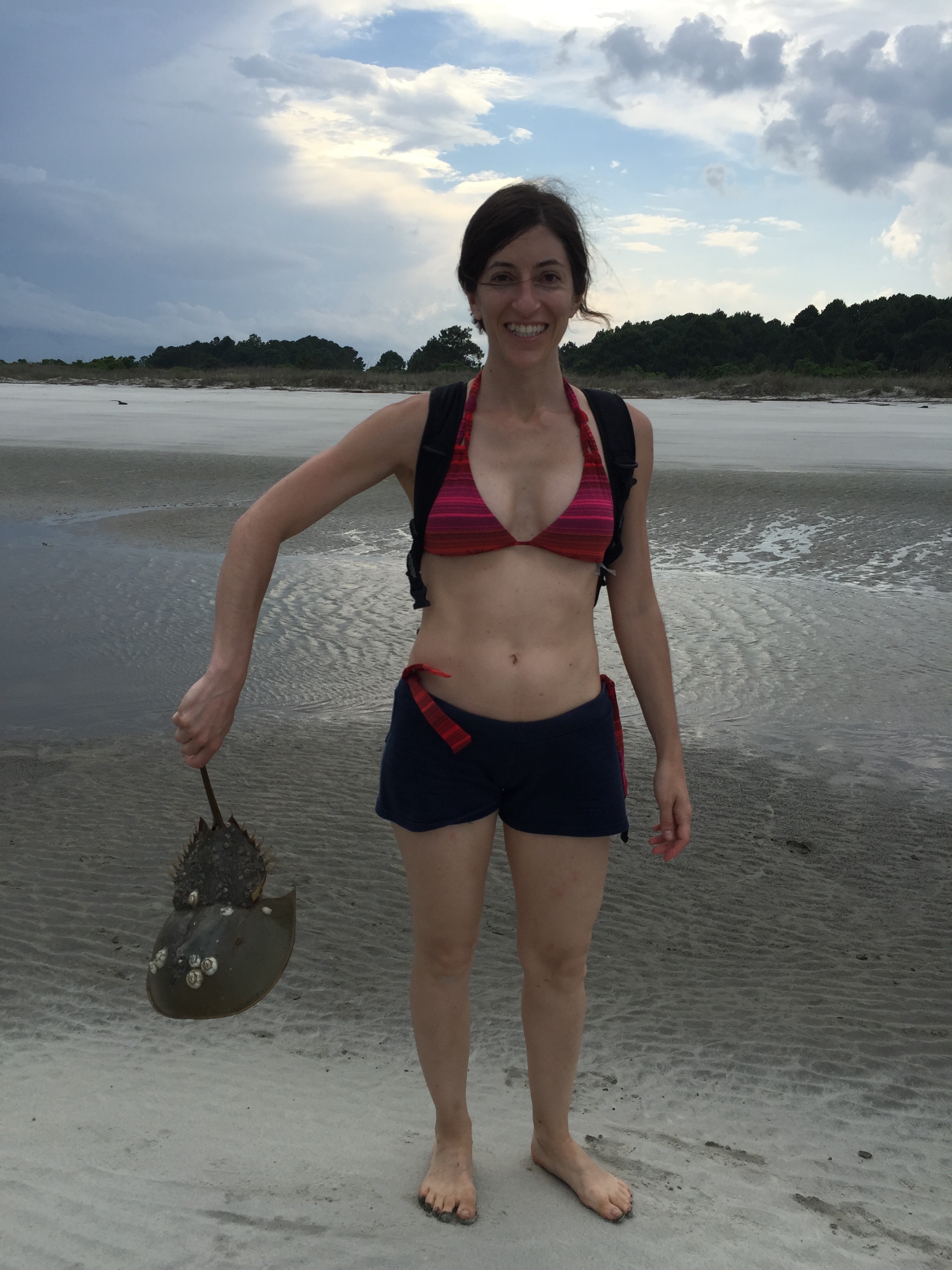
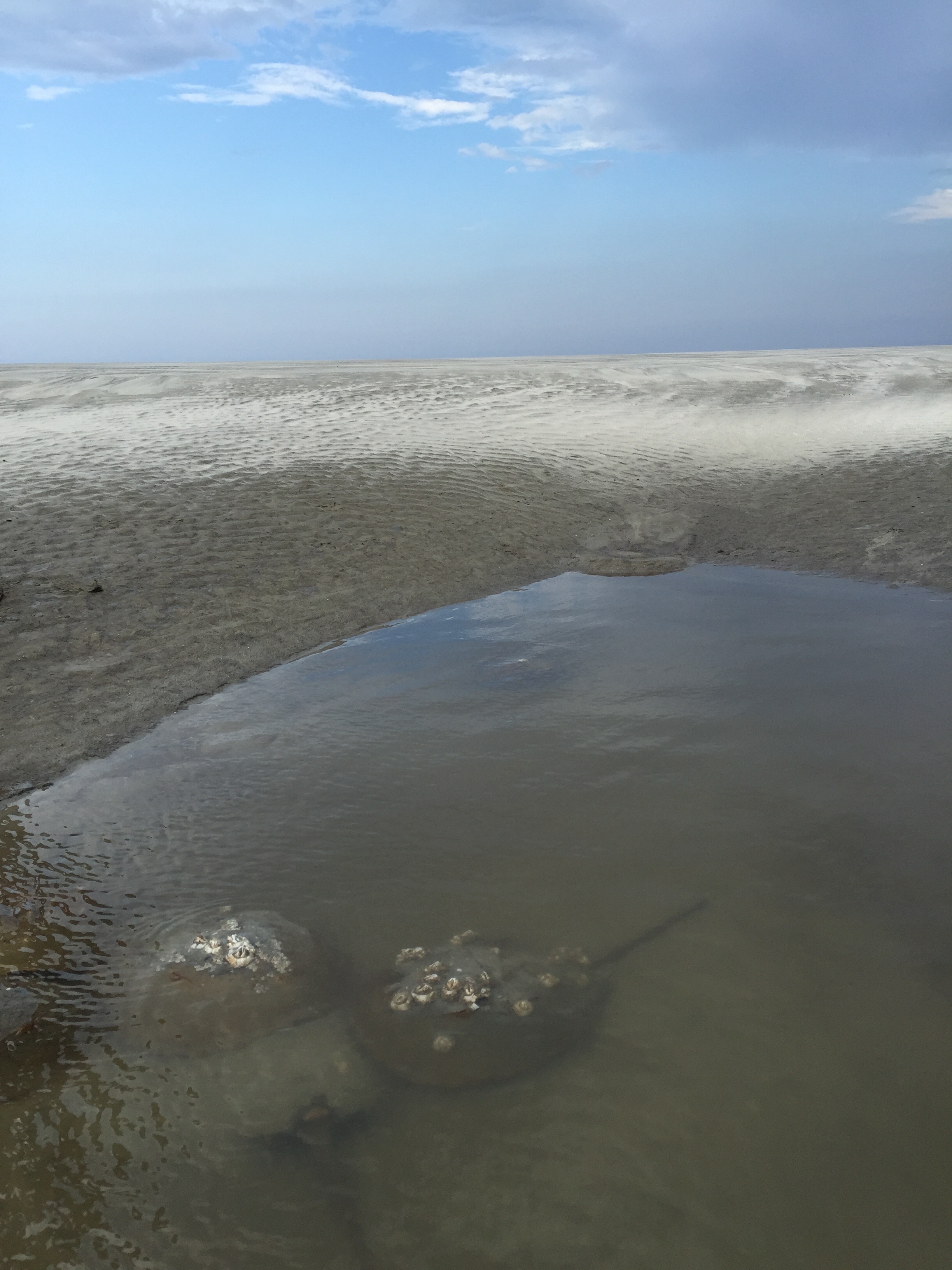
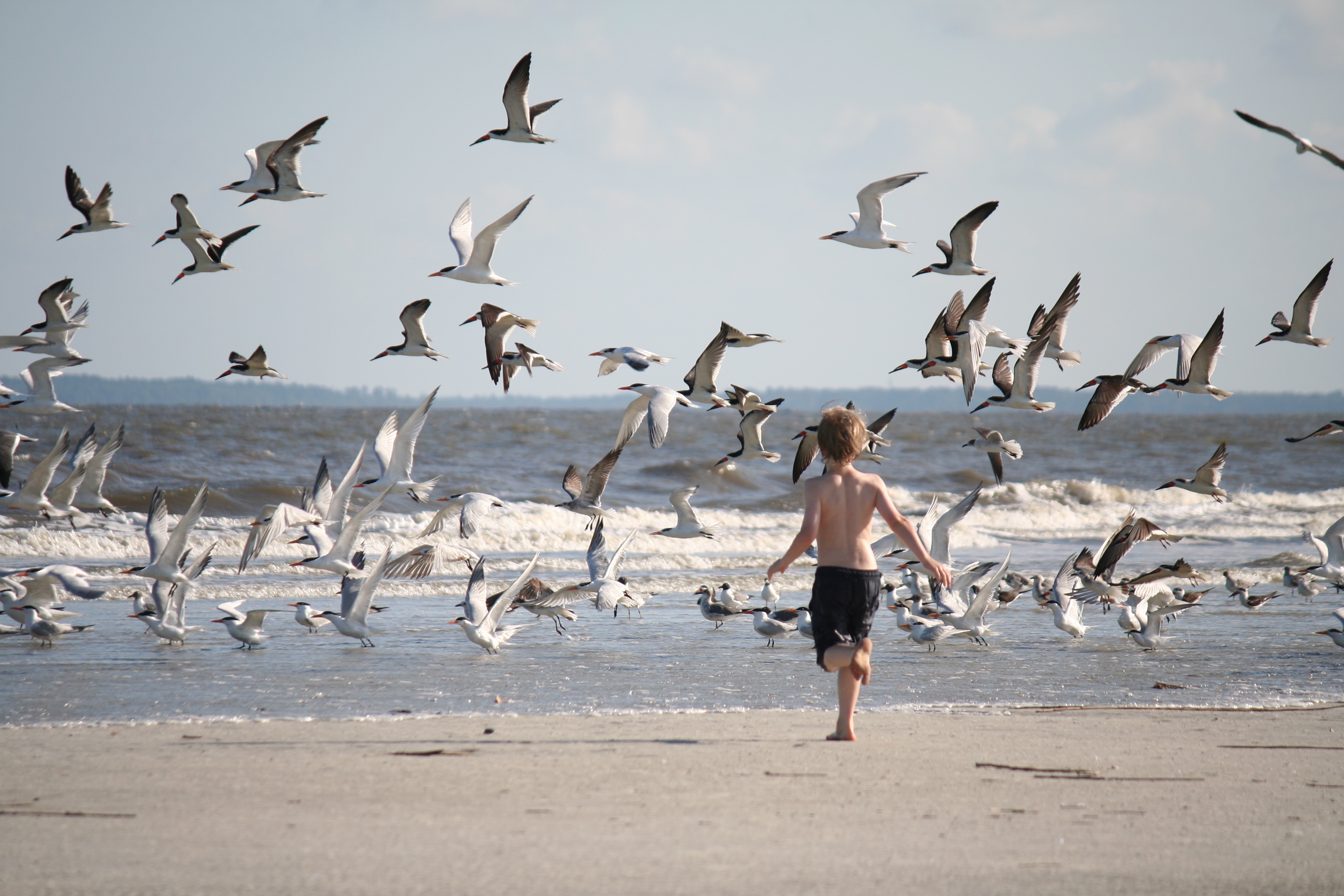
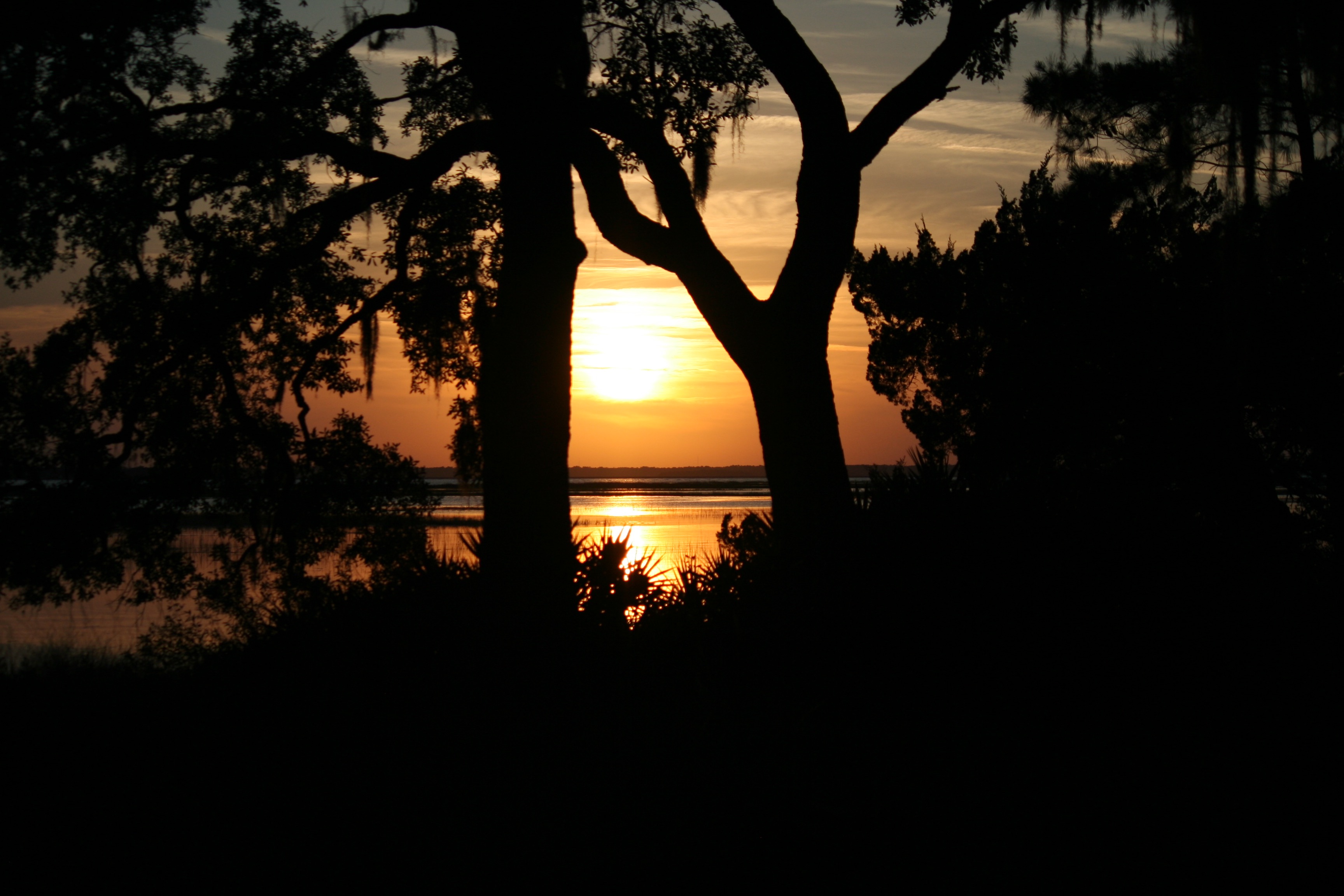
It goes without saying I have about 200 more pictures as good as those or better. We got our quarry, maybe 1-2 more field trips for Christine on her way to doctorhood! We were all sad to leave Sapelo (the loss of a day in cleaning, driving, unpacking, exhaustion, back to building), but quickly got to look forward to the next trip - south central Georgia for a day on a river with Katie Bockrath and Mary Freeman’s fish crew, who helped get us a second round of mussel hosts collected on a beautiful day before a big storm. The timing is everything - water temperature, how high the stream is running, whether it is storming of course, whether we can round up a truck on short notice (not to mention a crew) - and this was almost effortless for once!
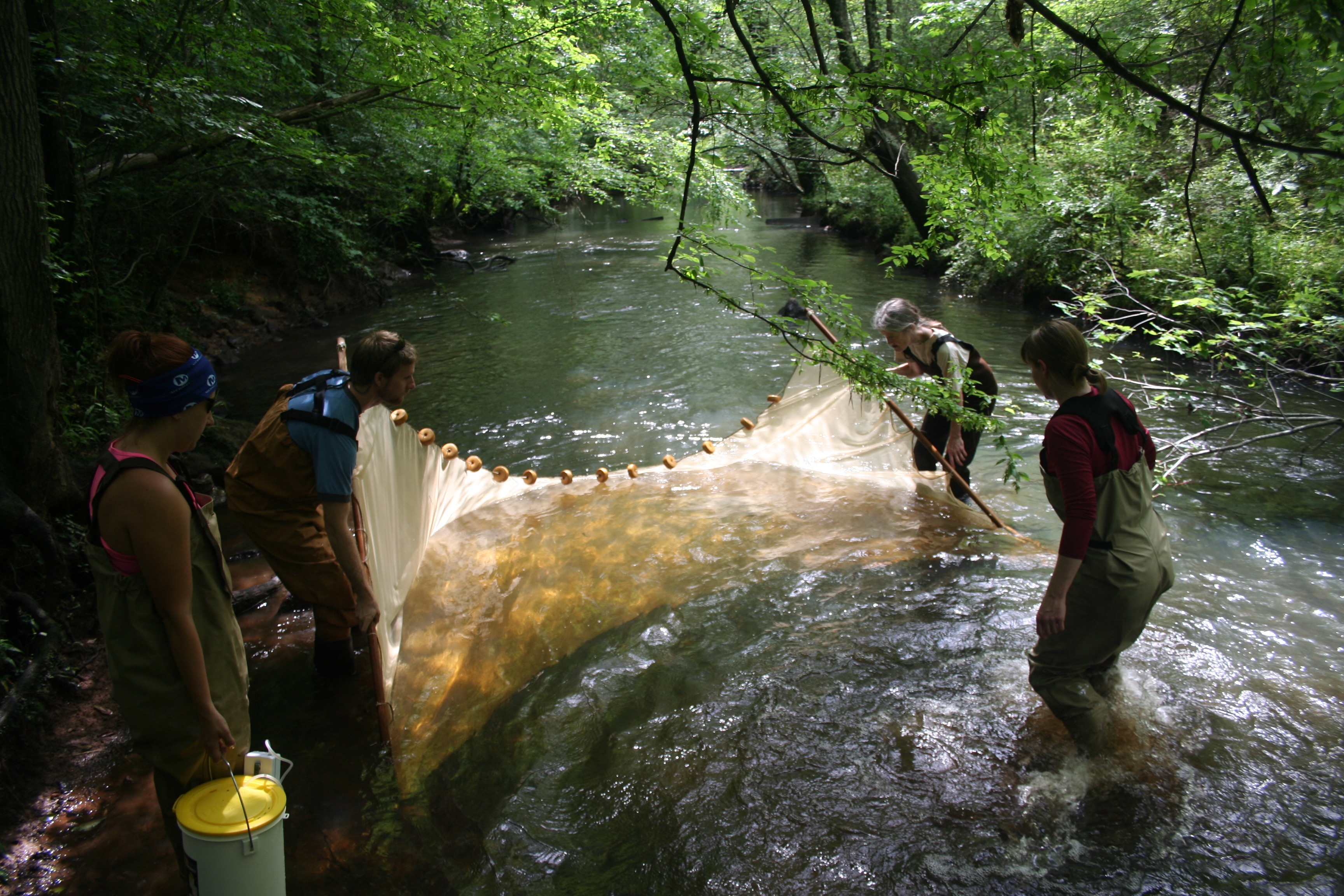
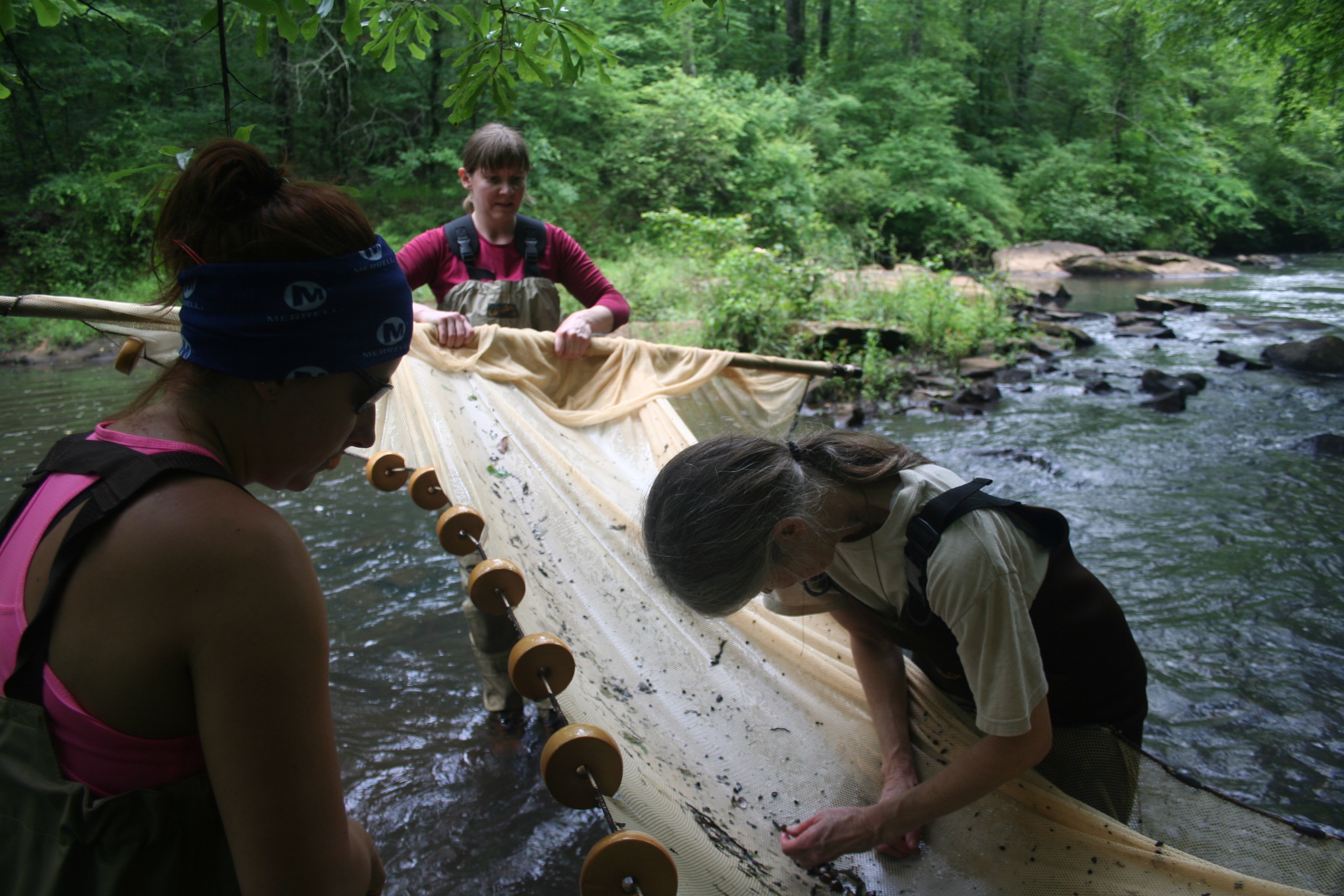
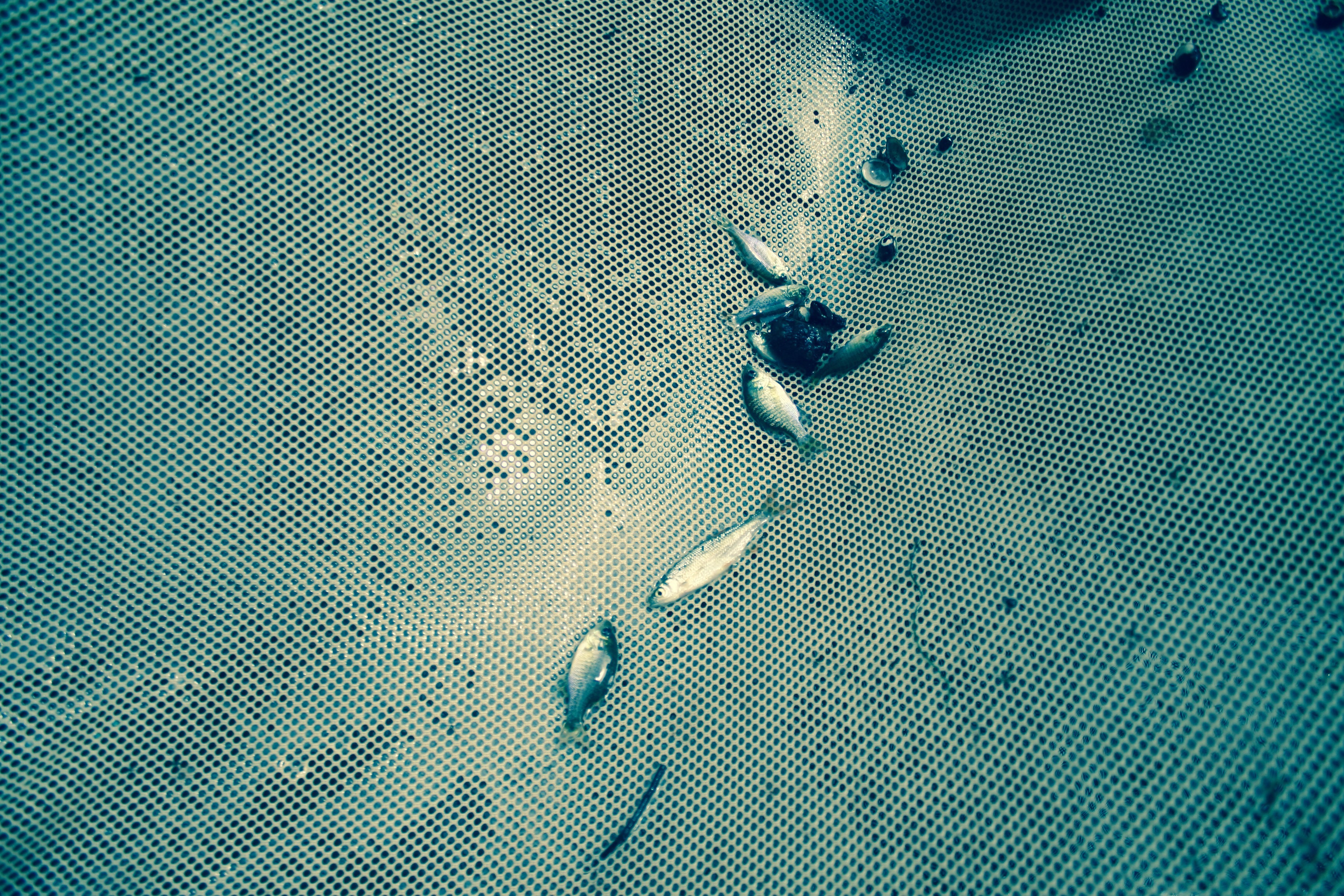
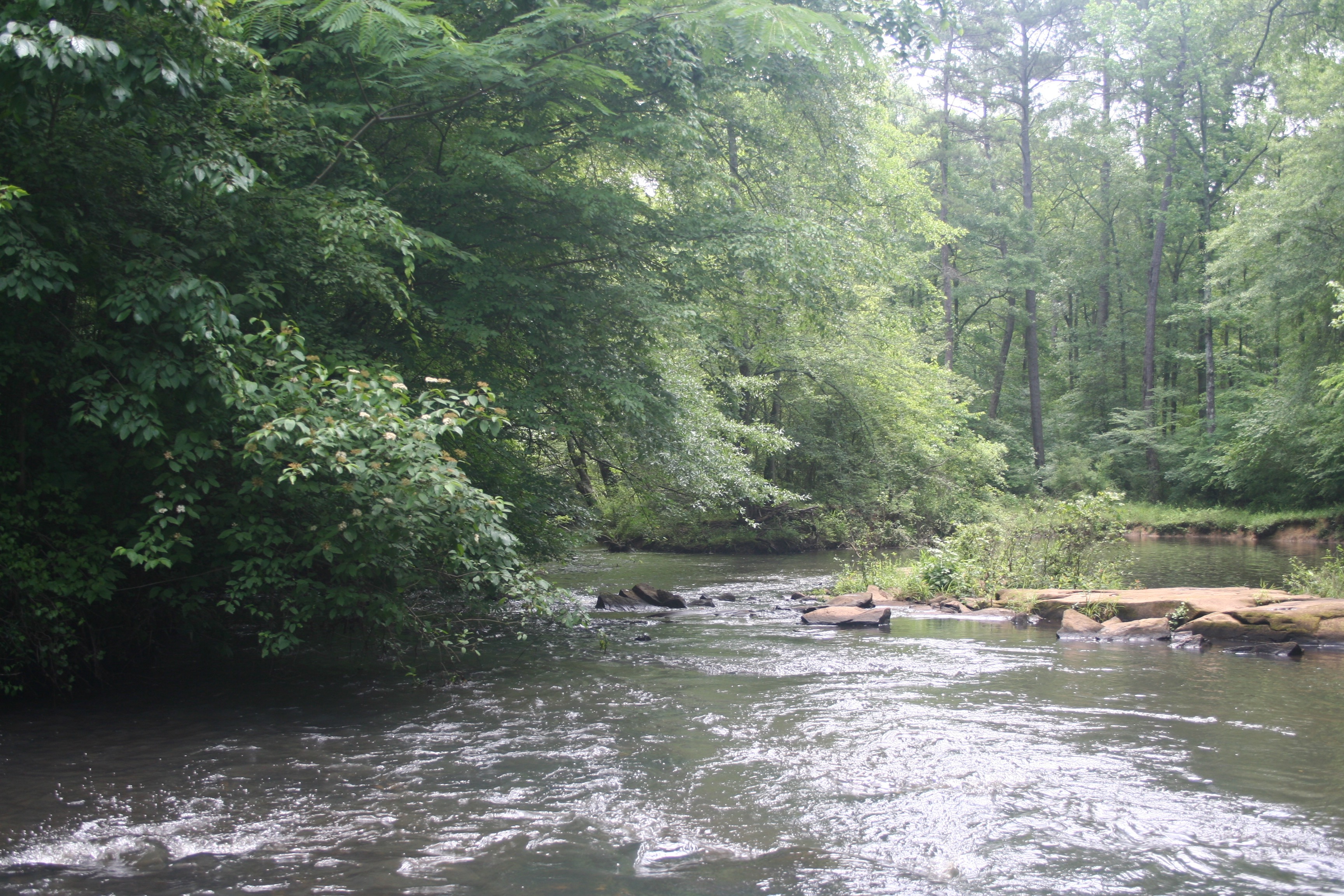
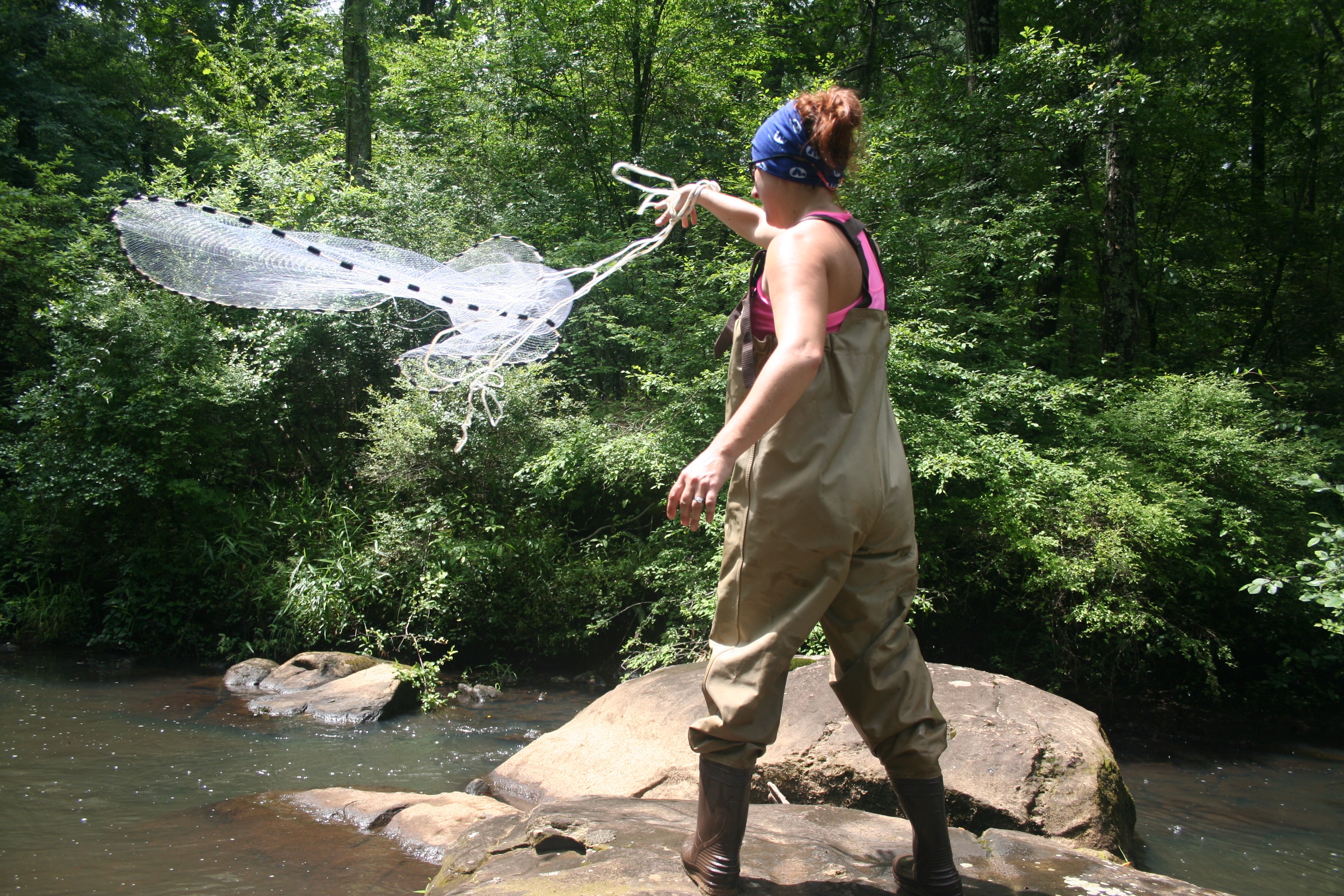
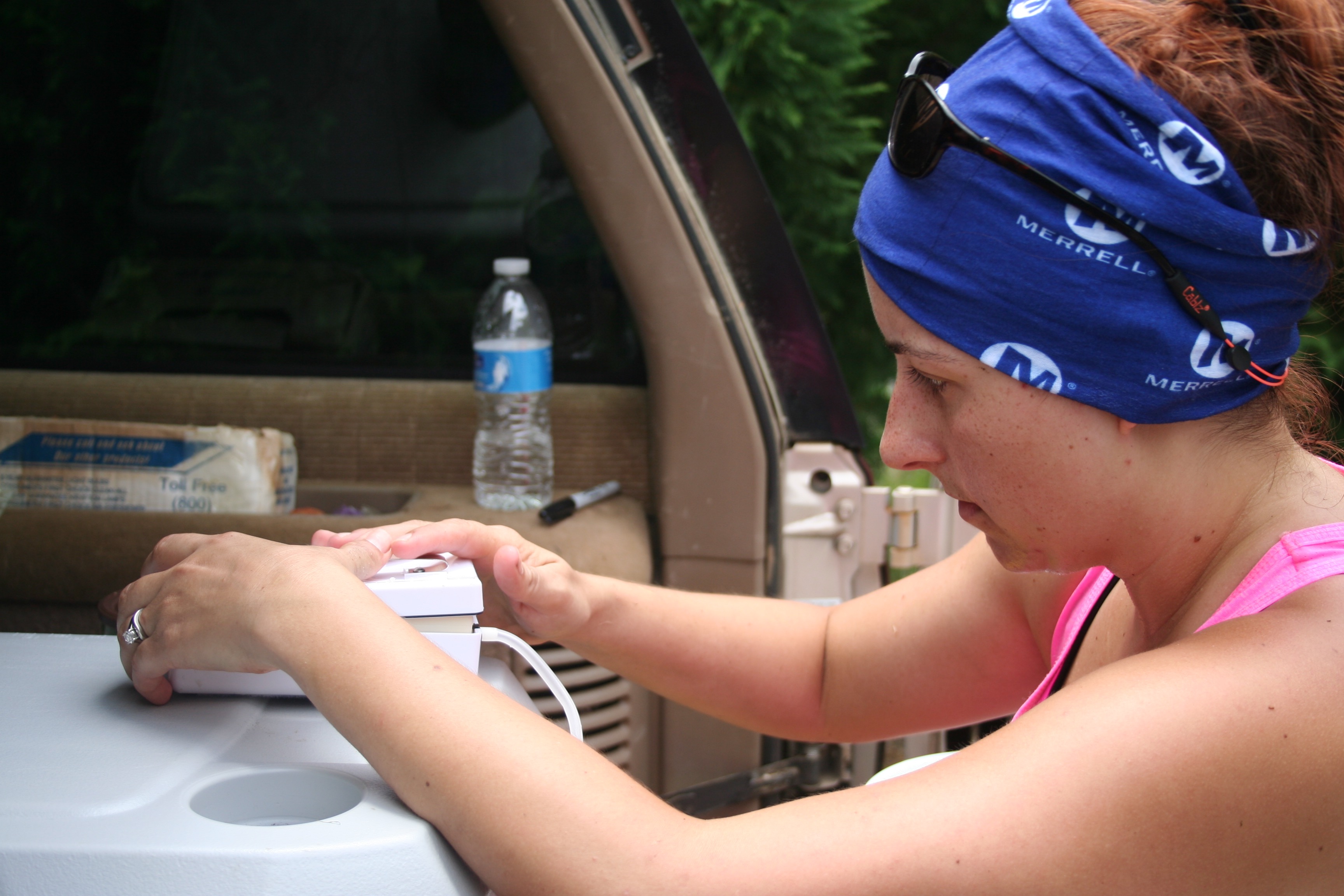
Thanks to everybody in the lab and otherwise who helped on these trips, in any way - these are the days I most feel like a biologist.
Hey, I love teaching. And there are parts of my job that I love. But most of those parts are concentrated in the few days a year when I’m working, but not in my building. Right now none of my projects are in active need of field sampling or monitoring or measuring anything, so I am living vicariously through my students. Christine led an expedition out to Sapelo last week, where the UGA Marine Institute put us up in a house on the marsh for 5 days of finding horseshoe crabs (for their Chelonibia epibionts - Christine’s dissertation beast), exploring the marsh, teaching my 8-year-old the taxonomy of fiddler crabs, a little beach time, and a lot of writing and excellent together time, all of it much needed.








It goes without saying I have about 200 more pictures as good as those or better. We got our quarry, maybe 1-2 more field trips for Christine on her way to doctorhood! We were all sad to leave Sapelo (the loss of a day in cleaning, driving, unpacking, exhaustion, back to building), but quickly got to look forward to the next trip - south central Georgia for a day on a river with Katie Bockrath and Mary Freeman’s fish crew, who helped get us a second round of mussel hosts collected on a beautiful day before a big storm. The timing is everything - water temperature, how high the stream is running, whether it is storming of course, whether we can round up a truck on short notice (not to mention a crew) - and this was almost effortless for once!






Thanks to everybody in the lab and otherwise who helped on these trips, in any way - these are the days I most feel like a biologist.
Horseshoes
16/06/14 13:36
| I had to post one of | Adam Bewick’s photos from my lab’s trip down to Sapelo this past weekend. Nice color, composition, and a little insight into the work that is involved in getting some turtle barnacles for Christine Ewers-Saucedo’s research!
Barnacles
03/06/13 16:16
Origin of the name [edit]
In 13th-century England the word "barnacle" was used for a species of waterfowl, the barnacle goose (Branta leucopsis). This bird breeds in the Arctic but winters in the British Isles so its nests and eggs were never seen by the British. It was thought at the time that the gooseneck barnacles that wash up occasionally on the shore had spontaneously generated from the rotting wood to which they were attached, and that the geese might be generated similarly. Credence to the idea was provided by the tuft of brown cirri that protruded from the capitulum of the crustaceans which resembled the down of an unhatched gosling. Popular belief linked the two species and a writer in 1678 wrote "multitudes of little Shells; having within them little Birds perfectly shap'd, supposed to be Barnacles [by which he meant barnacle geese]."[5]
From Wikipedia entry on Lepas anatifera.
In 13th-century England the word "barnacle" was used for a species of waterfowl, the barnacle goose (Branta leucopsis). This bird breeds in the Arctic but winters in the British Isles so its nests and eggs were never seen by the British. It was thought at the time that the gooseneck barnacles that wash up occasionally on the shore had spontaneously generated from the rotting wood to which they were attached, and that the geese might be generated similarly. Credence to the idea was provided by the tuft of brown cirri that protruded from the capitulum of the crustaceans which resembled the down of an unhatched gosling. Popular belief linked the two species and a writer in 1678 wrote "multitudes of little Shells; having within them little Birds perfectly shap'd, supposed to be Barnacles [by which he meant barnacle geese]."[5]
From Wikipedia entry on Lepas anatifera.
Field Work
11/01/13 09:30
We are preparing for our trip to Chile - my student Christine, her partner Daniel as field crew, and I - and I know this is going to be a good trip. We need to go down there to explore a second genealogical transition in the barnacle Notochthamalus scabrosus, which I’ve been studying for 6-7 years now. It is a good use of my research funds, but one could argue that all three of us don’t need to be down there to scrape barnacles! However, I know the system and have been down there before; it is Christine’s current research; Daniel is more fluent in Spanish and a more experienced field researcher; and we want the project to succeed. But beyond that I had forgotten an important reason to get down there: working with the organisms in the field changes everything about what you know about a biological system.
I just finished re-reading Steinbeck’s Log from the Sea of Cortez and two passages have to be shared.
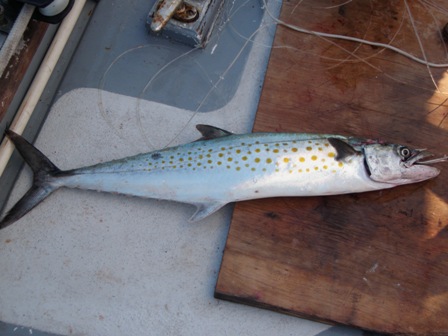
“We knew that what we would see and record and construct would be warped, first, by the collective pressure....of our time and race, second ...by our personalities. But knowing this, we might not fall into too many holes - we might maintain some balance between our warp and the separate thing, the external reality. The oneness of these two might take its contribution from both. For example: the Mexican sierra has "XVII-15-IX" spines in the dorsal fin. These can easily be counted. But if the sierra strikes hard on the line so that our hands are burned, if the fish sounds and nearly escapes and finally comes in over the rail, his colors pulsing and his tail beating the air, a whole new relational externality has come into being - an entity which is more than the sum of the fish plus the fisherman. The only way to count the spines of the sierra unaffected by this second relational reality is to sit in a laboratory, open an evil-smelling jar, remove a stiff colorless fish from formalin solution, count the spines, and write the truth "D. XVII-15-IX." There you have recorded a reality which cannot be assailed - probably the least important reality concerning either the fish or yourself.”
and then...
“Our own interest lay in relationships of animal to animal. If one observes in this relational sense, it seems apparent that species are only commas in a sentence, that each species is at once the point and the base of a pyramid, that all life is relational to the point where an Einsteinian relativity seems to emerge. And then not only the meaning but the feeling about species grows misty. One merges into another, groups melt into ecological groups until the time when what we know as life meets and enters what we think of as non-life: barnacle and rock, rock and earth, earth and tree, tree and rain and air. And the units nestle into the whole and are inseparable from it. Then one can come back to the microscope and the tide pool and the aquarium. But the little animals are found to be changed, no longer set apart and alone. And it is a strange thing that most of the feeling we call religious, most of the mystical outcrying which is one of the most prized and used and desired reactions of our species, is really the understanding and the attempt to say that man is related to the whole thing, related inextricably to all reality, known and unknowable. This is a simple thing to say, but the profound feeling of it made a Jesus, a St. Augustine, a St. Francis, a Roger Bacon, a Charles Darwin, and an Einstein. Each of them in his own tempo and with his own voice discovered and reaffirmed with astonishment the knowledge that all things are one thing and that one thing is all things - plankton, a shimmering phosphorescence on the sea and the spinning planets and an expanding universe, all bound together by the elastic string of time. It is advisable to look from the tide pool to the stars and then back to the tide pool again.”
And so, we go to the field next month.
I just finished re-reading Steinbeck’s Log from the Sea of Cortez and two passages have to be shared.

“We knew that what we would see and record and construct would be warped, first, by the collective pressure....of our time and race, second ...by our personalities. But knowing this, we might not fall into too many holes - we might maintain some balance between our warp and the separate thing, the external reality. The oneness of these two might take its contribution from both. For example: the Mexican sierra has "XVII-15-IX" spines in the dorsal fin. These can easily be counted. But if the sierra strikes hard on the line so that our hands are burned, if the fish sounds and nearly escapes and finally comes in over the rail, his colors pulsing and his tail beating the air, a whole new relational externality has come into being - an entity which is more than the sum of the fish plus the fisherman. The only way to count the spines of the sierra unaffected by this second relational reality is to sit in a laboratory, open an evil-smelling jar, remove a stiff colorless fish from formalin solution, count the spines, and write the truth "D. XVII-15-IX." There you have recorded a reality which cannot be assailed - probably the least important reality concerning either the fish or yourself.”
and then...
“Our own interest lay in relationships of animal to animal. If one observes in this relational sense, it seems apparent that species are only commas in a sentence, that each species is at once the point and the base of a pyramid, that all life is relational to the point where an Einsteinian relativity seems to emerge. And then not only the meaning but the feeling about species grows misty. One merges into another, groups melt into ecological groups until the time when what we know as life meets and enters what we think of as non-life: barnacle and rock, rock and earth, earth and tree, tree and rain and air. And the units nestle into the whole and are inseparable from it. Then one can come back to the microscope and the tide pool and the aquarium. But the little animals are found to be changed, no longer set apart and alone. And it is a strange thing that most of the feeling we call religious, most of the mystical outcrying which is one of the most prized and used and desired reactions of our species, is really the understanding and the attempt to say that man is related to the whole thing, related inextricably to all reality, known and unknowable. This is a simple thing to say, but the profound feeling of it made a Jesus, a St. Augustine, a St. Francis, a Roger Bacon, a Charles Darwin, and an Einstein. Each of them in his own tempo and with his own voice discovered and reaffirmed with astonishment the knowledge that all things are one thing and that one thing is all things - plankton, a shimmering phosphorescence on the sea and the spinning planets and an expanding universe, all bound together by the elastic string of time. It is advisable to look from the tide pool to the stars and then back to the tide pool again.”
And so, we go to the field next month.
New Year
17/01/12 12:08
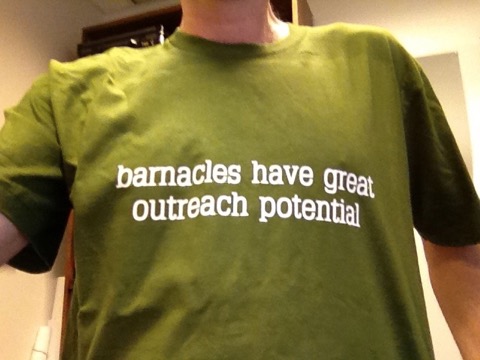
To add to the pantheon of great Nerd Shirts out there, we made these T-shirts for the SICB meeting in Charleston, SC which I attended the first weekend of January, along with Christina Zakas and Christine Ewers from my lab. Presumably, this was only funny to the 12 or so members of the symposium I spoke at, but if you understand this: you are also a nerd.
As always, much going on. The RAD-tagged data are back for Notochthamalus, and Christina is working on interpreting these data (hopefully before I give a talk on this project in early March at Auburn!). We also now have specimens of Notochthamalus from Ushuaia, the southernmost city on the planet - no matter what answer their DNA barcodes give up, it will be an interesting one.
We are also pleased to be hosting César Ribeiro, from the Universidade de Aveiro in Portugal. He is a doctoral student with a background in biochemistry and physical modeling, working on the physical oceanography of the Macaronesian Islands and how the oceanography mates with population genetic data. This is not an easy problem, and very similar to what we are trying to do on the east coast of the US and the coast of Chile.
Flying Barnacles
04/03/11 13:42
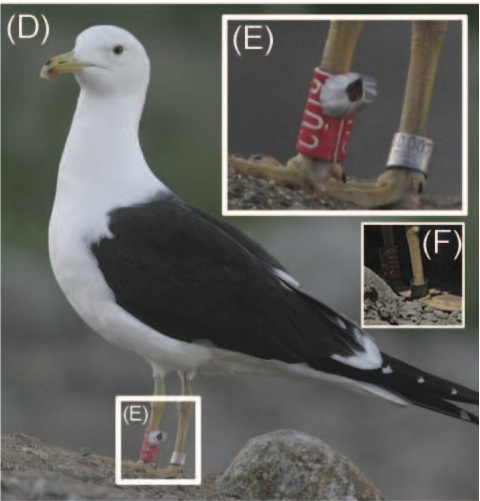
from Tøttrup et al 2010 Biofouling 26: 577-582. Thanks to Christine for finding this...although the individual in (E) looks dead, some of the other images in the figures in this paper are more likely alive and living a life most barnacles only dream of.
Barnacle Mating
21/02/11 09:55
One of the great things about going to big meetings always used to be, frankly, partying with my old comrades from grad school. As we age, I have to say I am starting to get just as excited about interacting with the up-and-comers who are transforming science as we watch. Though this is a belated shout-out to her, I met UC Davis graduate student Morgan Kelly at those meetings and was really impressed with her work on Tigriopus. I was even more surprised last week when one of my newer grads brought this paper to me. I’ve spent most of my research on acorn barnacles and thought I knew them pretty well, but this paper really opens up the door toward understanding reproductive behavior and strategies in this diverse group. What is particularly intriguing is thinking about some systems I know about where parasites can induce a change in reproductive strategy, e.g. from hermaphroditism to androdioecy. Whether this turns into a new project or not it is too early to say, but thanks to Morgan and Eric Sanford for a really interesting read!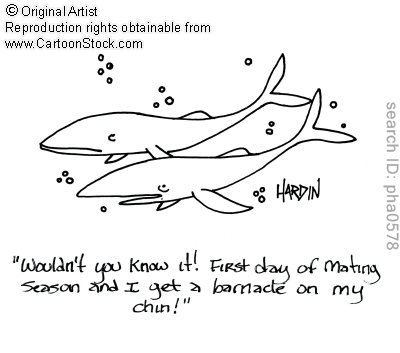

Answers Lead to Questions
10/02/11 09:30
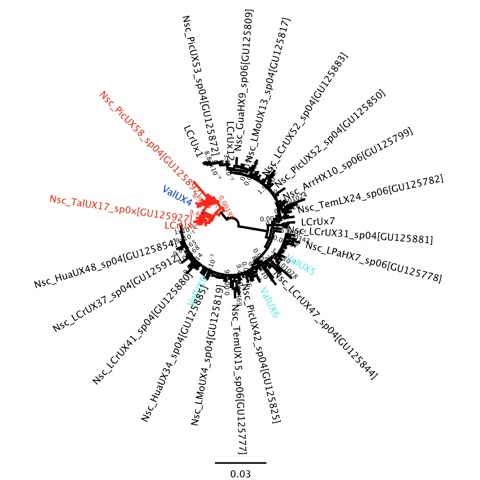
There is nothing too clear about the figure I’ve pasted in here, that is partly intentional because I’m still figuring some things out. But, this figure represents the first new step in understanding the genetic/species patterns along the coast of Chile that my lab has taken since our paper (Zakas et al. 2009) came out in MEPS. New lab technician Kelly Laughlin has been coming up to speed very quickly over the past 4 weeks, and the first sequence data she collected included about 24 individuals of Notochthamalus from near Valdivia, Chile. This is about 500km further south than our survey in the past, and I wondered if the genetic cline that we observed would go to fixation for the southern haplogroup. In the image above, the southern haplogroup is red, the northern haplogroup is black, and in blue (only a small number are shown because of the scale of the tree) are individuals from Valdivia (6 in the red clade, 12 in the black). What this tells me is that the relative B/A frequency in Valdivia is exactly the same (about 1/3) as at Pichilemu, Las Cruces, and Punta Talca far to the north.
This suggests that all of the focus can return to the area around 31°S latitude, where there are tremendous shifts in physical oceanography, ecology, biogeography, and population genetics. But it is also a puzzling scenario for our tiny barnacle. My interpretation is that we are dealing with the equivalent of two incipient species being formed from one, and it remains to be seen what micromicrohabitat differences they have, but the ‘southern’ one simply doesn’t find that suitable microhabitat to the north of 31°S very often. Our upcoming genomic scan will help point us toward the factors that may be maintaining or promoting this differentiation, similar to John Grahame’s exciting work on intertidal Littorinids.
Climate and Weather
03/01/11 11:10
Given my last entry was about the weather, I wanted to be sure and point out that some of our funny weather is because of one of the short, fascinating cycles in the climate (something that climate skeptics often confuse is weather and climate). Seems we are going through a La Niña this winter, which should mean in general drier and warmer weather for Georgia. However, we also got a really nice snowfall late on December 25, so maybe we can have the best of both worlds for the next few months: good weather punctuated by beautiful snow!? I’ll keep my fingers crossed.
In the meantime, these oscillations in sea surface temperatures in the equatorial oceans keep me thinking of my barnacles down in Chile. I’ve just gotten word that the next shipment is about to arrive, just in time for new technician Kelly Laughlin to start in the lab. She will be working with others in the lab to get these specimens prepped for our Illumina next-generation sequencing efforts, hopefully to be done by March. My goal of March is set partly by what can be done by my colleagues down south, and partly by what I’m hoping people like student Christina Zakas can do before graduating, which is to help teach me all her tricks for SNP discovery and genome organization!
In the meantime, these oscillations in sea surface temperatures in the equatorial oceans keep me thinking of my barnacles down in Chile. I’ve just gotten word that the next shipment is about to arrive, just in time for new technician Kelly Laughlin to start in the lab. She will be working with others in the lab to get these specimens prepped for our Illumina next-generation sequencing efforts, hopefully to be done by March. My goal of March is set partly by what can be done by my colleagues down south, and partly by what I’m hoping people like student Christina Zakas can do before graduating, which is to help teach me all her tricks for SNP discovery and genome organization!
Organization or the Lack Thereof
30/11/10 12:49
In five years I’ve managed to fill my $15,000 ultracold freezer, empty bits out of it, fill it again. There are 2 other freezers in our equipment hall, and one in the main lab. That is a lot of specimens, most of which are only locally organized - that is, they are organized in the brains of the people who put them in there, but not in any global sense. Sometimes, people don’t label things well, and sometimes things get lost.
Today I’m coming to grips with the fact that a few hundred fairly important DNA isolations appear to have been lost somewhere in the last 3-4 years, they are some DNA samples from specimens collected in Chile in 2004. That is a bummer, because I may have an opportunity to get some next-gen sequencing done in the very very near future.... but I need some DNA! I have a technician starting in January to help organize these things, but it may be a busy next couple of weeks. Fortunately, I asked my students working on the first batch of Chile specimens to dissect away tissues and then keep the rest of the specimens in labeled vials. A real pain in the ass for them at the time, but a very much appreciated repository of information to me right now!
This has me thinking about how to organize samples in the future. Much of what we have is organized the way we would organize things when I was a grad student: it is in a lab notebook, or an Excel spreadsheet if we are lucky. That works fine for projects with samples in the low 100’s, but doesn’t work at all once the projects get larger, or have more loci, more locations, more times, and so on.
How complex do we want the process of curation to be? There are some really nice options, such as this LIMS plug-in for Geneious, which are worth considering as an all-in-one approach. However, the mental cost of getting started in that way is pretty high, both for me as advisor as well as for an incoming technician or graduate student. Most of the system only works well once you understand all steps of the process - and if you understand all steps of the process, you may also understand that Geneious doesn’t always handle each of these steps in the ideal way (though in general I’m a fan of that software).
For now I’m considering keeping things really basic - something like Excel or Numbers - which can then easily be uploaded into an actual database, either a baby one like Bento or a more complex one like that linked above. Either way it is clear it is time to get more savvy about what I’m freezing, because chances are good that any single freezer rack is containing a chapter for a graduate student, no reason for those hard-won samples to go to waste.
Today I’m coming to grips with the fact that a few hundred fairly important DNA isolations appear to have been lost somewhere in the last 3-4 years, they are some DNA samples from specimens collected in Chile in 2004. That is a bummer, because I may have an opportunity to get some next-gen sequencing done in the very very near future.... but I need some DNA! I have a technician starting in January to help organize these things, but it may be a busy next couple of weeks. Fortunately, I asked my students working on the first batch of Chile specimens to dissect away tissues and then keep the rest of the specimens in labeled vials. A real pain in the ass for them at the time, but a very much appreciated repository of information to me right now!
This has me thinking about how to organize samples in the future. Much of what we have is organized the way we would organize things when I was a grad student: it is in a lab notebook, or an Excel spreadsheet if we are lucky. That works fine for projects with samples in the low 100’s, but doesn’t work at all once the projects get larger, or have more loci, more locations, more times, and so on.
How complex do we want the process of curation to be? There are some really nice options, such as this LIMS plug-in for Geneious, which are worth considering as an all-in-one approach. However, the mental cost of getting started in that way is pretty high, both for me as advisor as well as for an incoming technician or graduate student. Most of the system only works well once you understand all steps of the process - and if you understand all steps of the process, you may also understand that Geneious doesn’t always handle each of these steps in the ideal way (though in general I’m a fan of that software).
For now I’m considering keeping things really basic - something like Excel or Numbers - which can then easily be uploaded into an actual database, either a baby one like Bento or a more complex one like that linked above. Either way it is clear it is time to get more savvy about what I’m freezing, because chances are good that any single freezer rack is containing a chapter for a graduate student, no reason for those hard-won samples to go to waste.
Chile and The Force
09/11/10 12:13
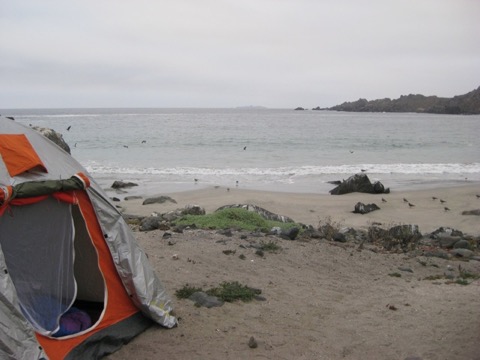
Three days in Chile, quite a weekend. I won’t say it was hectic, because I spent a lot of time waiting in airports and then a lot of time being well-cared-for by my hosts in Chile. We camped on the beach at Temblador, ate wonderful food, got to know each other well. My work in Chile dovetails very nicely with that of postdoc Jenna Shinen, who is currently based at ECIM in Las Cruces and works with Sergio Navarrete.
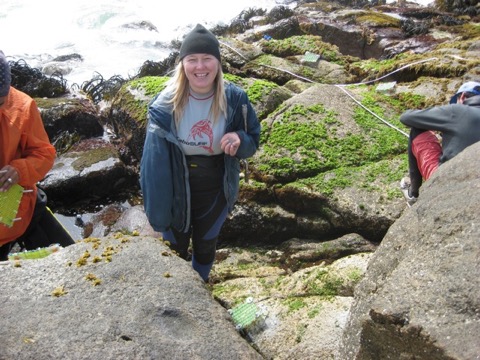
We are both studying the dynamics of the barnacles Notochthamalus and Jehlius, and this trip was an opportunity to get to know the system better (for me - Jenna knows it inside and out), meet the field technicians (Elliott and Felipe pictured below), and of course to collect some barnacles.
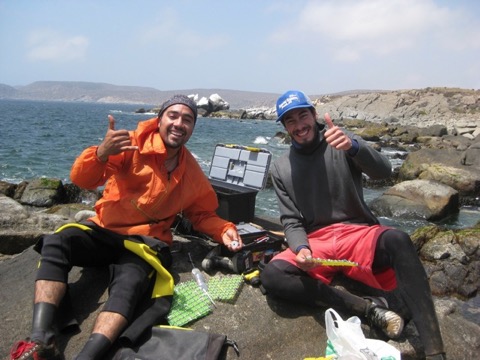
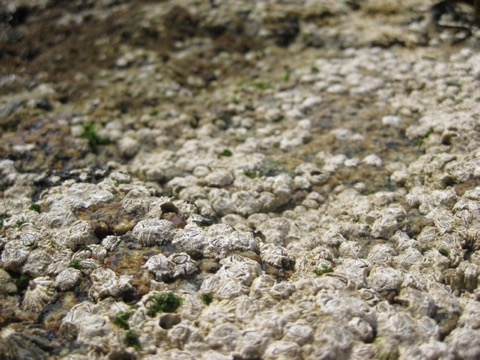
Along the way I had some fantastic seafood (mariscos), empañadas, good drinks, watched some fútbol.... and perhaps most surprisingly, got re-acquainted with Star Wars. These movies have gripped my Chilean colleagues pretty fiercely, and we spent a lot of time in the intertidal singing this:
It is amazing how easily one can fly around the world so quickly, stand in places that Darwin may have stood 150 years ago, study the same organisms....and have the most memorable component of the trip involve Darth Vader.
Marine Biology
13/10/10 15:15
How funny is it to call yourself a marine biologist?
McSweeney’s knows it is funny.
Seinfeld knew it was funny.
And with colleagues like J-Long, it IS funny.
After the hairy theory/numerical/simulation Genetics paper our lab group read today though, I’d rather call myself a marine biologist any day!
McSweeney’s knows it is funny.
Seinfeld knew it was funny.
And with colleagues like J-Long, it IS funny.
After the hairy theory/numerical/simulation Genetics paper our lab group read today though, I’d rather call myself a marine biologist any day!
Be Careful What You Wish For
14/06/10 09:17
When you don’t have funding, I’ve discovered, you crave information about it. You look for unturned rocks, in case there is some funding opportunity that has been missed. You apply for as many opportunities as you can, trying to hone your ideas into something that has general appeal (at least, enough general appeal for the review panels at NSF or NIH). You figure the funding rate is low, but one of these has to be of interest, one of them will get funded.....the problem is when you are crunching out grants like that and all of a sudden you hit a lucky streak! I just found out that my work on genetic clines and using genetic data to track oceanography along the coast of Chile has been funded - that’s 3 major grants this year, and another one lurking in NIH’s inbox!
Suffice it to say, I’ll be looking for help. Maybe a technician, maybe another grad student. Maybe somebody to mow my lawn, since I’m not going to have as much time around the house for a few years it seems (one can wish; it is supposed to be 99° today!)...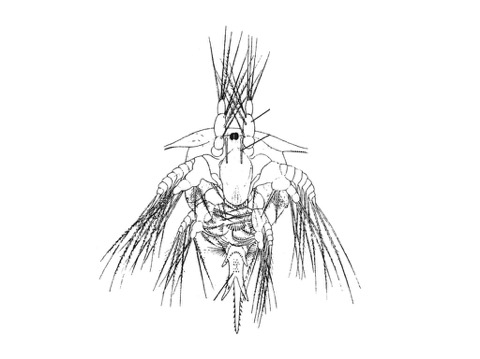
Suffice it to say, I’ll be looking for help. Maybe a technician, maybe another grad student. Maybe somebody to mow my lawn, since I’m not going to have as much time around the house for a few years it seems (one can wish; it is supposed to be 99° today!)...

beautiful nauplius drawing from Perez-Losada et al. 2009 BMC Evol. Biol.
Why Barnacles?
08/09/09 12:30
Most people who work with me know I work on barnacles. Of course, I study a lot of things - in the past few years my lab has had projects pertaining to corals, polychaetes, cladocerans, isopods, seastars, fishes, and certainly barnacles (that’s five phyla, plus I was co-author on an Apicomplexan phylogeny paper for six!). But as somebody who is interested in how passively-dispersing larvae interact with the environment, including ocean currents, physiological gradients, competition for space, and so on, barnacles are really a nice choice. They’re hermaphroditic, sessile, fecund, and easy to find. They were the choice taxon of Charles Darwin. They suggest endless questions of morphological plasticity (and stasis!), adaptation, speciation, and biogeography. They keep intertidal rocks from being too slippery to stand on. And, for some at least - I haven’t yet been anywhere that I could do this - they’re really tasty. Of course I am most interested in what the nauplius larvae are doing, and there isn’t much of a meal in things that are less than 500 microns in size, so next time I’m in Chile I guess I better find a market that serves up the adults!

In other news, Penny Haddrill’s work in my backyard (the Five Points Biological Station) has confirmed not only that we have an abundance of D. melanogaster (if only they could outcompete the mosquitoes), but also the recent invader Zaprionus, an attractive but destructive little fly that will apparently be a problem for my peach tree in years to come. If anybody has ideas for some good evolutionary ecology to be done on a backyard that looks wild but is predominantly composed of invasive species, I guess the FPBS is the place to be.

In other news, Penny Haddrill’s work in my backyard (the Five Points Biological Station) has confirmed not only that we have an abundance of D. melanogaster (if only they could outcompete the mosquitoes), but also the recent invader Zaprionus, an attractive but destructive little fly that will apparently be a problem for my peach tree in years to come. If anybody has ideas for some good evolutionary ecology to be done on a backyard that looks wild but is predominantly composed of invasive species, I guess the FPBS is the place to be.
